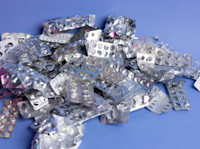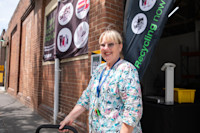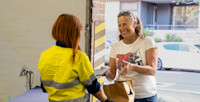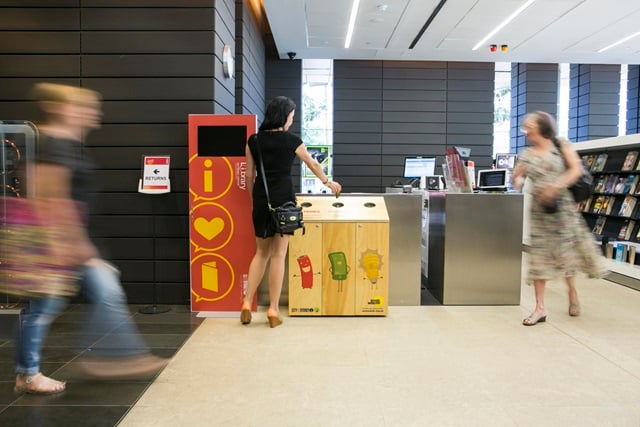Recycle household items
Learn about what can go in your yellow lid bin and other ways to recycle household items.
Project Status: When you need to do this
If you live in a house, terrace or apartment building in our local area, there are many ways for you to recycle.
When you finish using an item, check if it can be recycled in your yellow lid bin or through one of our other recycling services.
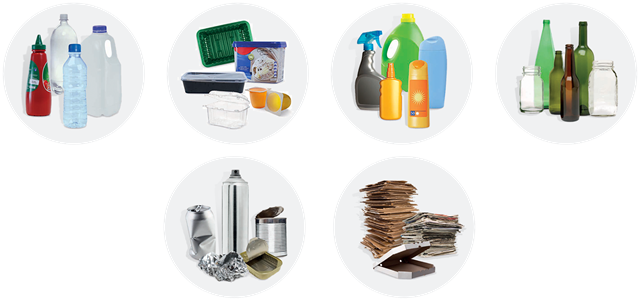
Check the item can go in your yellow lid bin
We provide households with a yellow lid bin for recycling.
Only place accepted items in your yellow lid bin for recycling. We can’t collect your bin if:
- it contains a large amount of unacceptable items
- the bin lid can’t close
- there's material outside your bin.
Learn 6 handy tips to help you recycle right.
Australasian Recycling Label
Keep an eye out for this label – it helps make recycling easier.
Recycle eligible bottles and cans with Return and Earn
You can drop off eligible containers to the NSW Government’s Return and Earn collection points and receive 10c an item.
These containers can also be recycled in your yellow lid bin.
- Collect eligible bottles, cans and cartons.
- Take bottles and cans to your nearest collection point. There are many collection points in our local area. Some collection points are on City of Sydney land, including self-service reverse vending machines located:
- on the ground floor of the car park behind the Kings Cross Police Station, 10am to 4pm, daily.
- in the Sydney Park Alexandria car park, 7am to 7pm, daily.
- Earn a refund or donate it.
Questions?
All enquiries about Return and Earn can be directed to TOMRA, the network operator at [email protected] or 1800 290 691.
Ask a waste avoidance expert
Get answers to all your tricky questions about reducing, reusing and recycling at home.
If your item can’t go in the yellow lid bin, check if it can be recycled in other ways
These free services are available to all residents in our local area.
Drop-offs and events
Waste & recycling services
Recycle batteries, mobile phones and light bulbsLearn how to recycle these items in the easiest and most convenient ways.Waste & recycling services
Dispose of household chemicalsDifferent recycling and disposal methods are needed for these toxic types of waste. Never put them in your household bins.FreeEnvironmental support & funding
Ultimo recycling pop-upWalk up and drop off clothes in great condition, old electronics, polystyrene, x-ray scans and more. Weekly, free.Environmental support & funding
Recycle It SaturdayDrive and drop off clothes in great condition, old electronics, small metal items, bicycles, polystyrene, x-ray scans and more. Quarterly, free.
Booked collections
Waste & recycling services
Book a free pick-up for bulky itemsWe’ll collect old furniture, mattresses, whitegoods, electronics and other big household items you no longer need.About 1 weekWaste & recycling services
Book a doorstep recycling collection for tricky household itemsIt’s free to recycle clothes, batteries, polystyrene, electronics and other tricky items from your doorstep or apartment lobby.
Other bin services
Waste & recycling services
Recycle garden organicsOur green lid bin is an easy and free way to recycle your grass clippings, prunings and leaves into compost and mulch.FreeEnvironmental support & funding
Food scraps recycling serviceMore than 21,000 households are currently taking part and we plan to roll out an offering to all residents.
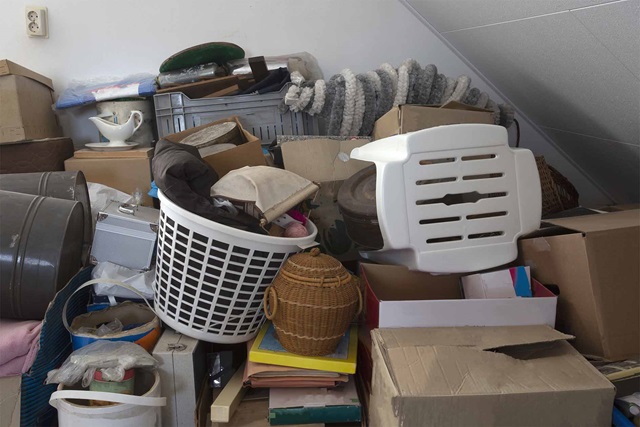
Type “recycling help” into our virtual assistant
Understanding the Australasian Recycling Label
The Australasian Recycling Label is a classification system for packaging that makes recycling easier.
It tells you which part of the package belongs in the recycling bin, the rubbish bin, or if you need to do something else with it.
Look out for the Australasian Recycling Label on the products you buy and refer to this label where you can.
There are 3 types of label classifications:
- Recyclable: The solid recycling symbol means this piece of packaging can be placed in the recycling bin as it is. Each piece of packaging with this label must be placed separately in the recycling bin.
- Conditionally recyclable: The clear recycling symbol means that you must follow the instructions to recycle this packaging part. If you don’t follow the instructions, it must go in the rubbish bin.
- Not recyclable: The bin symbol means that this piece of packaging is not recyclable and must go in the rubbish bin. Do not place it in the recycling bin.
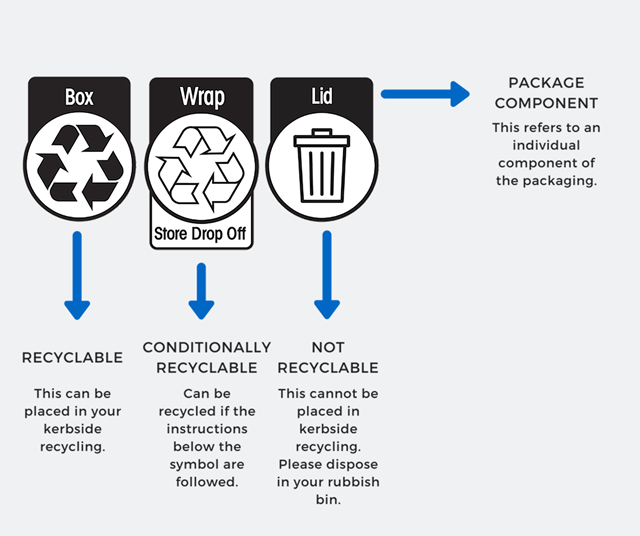


6 handy recycling tips
1. Don’t put recycling in plastic bags
Place your recycling loosely in the yellow lid bin – never in plastic bags. Plastic bags jam the machinery at our sorting facility, so we can’t recycle the bags or the items inside. Use a container or box to store your recycling before putting them into your bin.
2. Remove all food and liquid from containers
No need to rinse containers before putting them in the recycling bin. They just need to be empty and dry. You might like to rinse anyway, as it keeps your recycling bin extra clean and odour-free.
3. Lids and labels can stay on
Keep lids and labels on jars and bottles. The recycling process will remove these. If you have a can top that can’t reattach, place it inside and squeeze the can closed. This helps stop smaller items from getting lost in the recycling process.
4. Give plastic items the ‘scrunch test’
A soft plastic is a plastic that can be easily scrunched into a ball, like bread bags, chocolate wrappers or plastic bags. Soft plastics can’t go in your yellow lid bin. Put them in your red lid bin.
Hard plastic packaging that keeps its structure or bounces back when you try scrunching it can be recycled in your yellow lid bin.
5. Give cardboard items the ‘tear test’
Check if a cardboard item is lined with plastic by giving it a tear. If you can’t easily tear your cardboard item, or if you see a thin layer of plastic when you do, it should go in your rubbish bin. This is common for small ice cream tubs, tetra packs and coffee cups.
6. Ignore the plastics identification number
Some plastic items have a triangle symbol of 3 chasing arrows with a number from 1 to 7 inside.

This may look like a recycling symbol, but it’s not.
The number refers to the type of plastic the item is made from.
Each type of plastic can be used to make both recyclable and non-recyclable items, so don’t use the number to decide that something can go in your yellow lid bin. Instead, refer to the Australasian Recycling Label and use the tips above to help you identify if an item is recyclable or not.
City of Sydney News

News
3 free ways to recycle empty blister packsThey’re made of valuable materials but can’t be recycled in kerbside bins. Here’s what to do with them instead.8 April 2024
News
Meet the locals who rescue items from apartment bin roomsOur Ultimo recycling pop-up has been open for one year, diverting over 13 tonnes of materials from landfill.30 November 2023
News
Recycled materials revolutionise urban road renewalHow reused glass and asphalt reshaped Clarence Street.14 November 2023

News
Free waste reduction webinarsJoin our experts for practical tips to cut down your plastic and electronic waste from 3 to 14 July.8 June 2023
News
It’s easier than ever to recycle tricky itemsGive a second life to your old clothes, batteries, mobile phones, electronics, polystyrene, x-rays and more.7 March 2023News
Garbage truck fire a reminder to correctly dispose of batteriesThere are risks of improperly disposing of batteries.31 January 2023
News
Give tricky items a second life at our free recycling stationsThey’re in 16 locations and you can drop off small electronics, batteries, mobile phones and light bulbs.19 October 2022News
4 sustainable ways to get rid of unwanted stuffIt’s illegal to put items out on the footpath without booking a collection. You can stop them going to landfill.19 August 2022
After you finish
Where it all goes
After items are collected, they’re taken to a recycling transfer station in Alexandria, mixed with recycling from nearby council areas, and taken to Smithfield for processing. There, employees manually remove contamination, like plastic bags, and machines sort the recycling into types: paper, cardboard, plastic, glass, steel and aluminium.
These materials undergo further processing and are turned into packaging. For example, recycled glass can become a new glass bottle, paper and cardboard can become a new cardboard box and aluminium foil can become a new aluminium can.
View the journey of glass as it gets recycled.
Take your recycling to the next level
- Buy products that can be recycled. By recycling more, you help keep items out of the red lid bin and landfill – something that could save you money. If you’re a property owner, you may be able to reduce your domestic waste charge by completing the residential waste service application to reduce the size, number or collection frequency of your red lid bins. You can also order extra free yellow lid recycling bins.
- Buy items made from recycled material. This reduces the need for mining new resources, supports the recycling market and helps us move towards a circular economy.
- Reduce the waste you create. While recycling is important, we must reduce and avoid waste altogether. Learn more about the 4Rs and avoiding waste at home.
Get help with recycling
Ask our virtual assistant.
